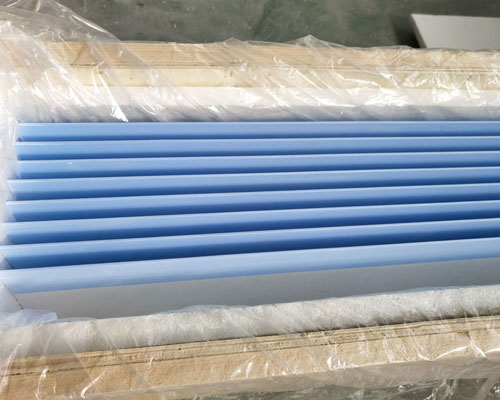Continuous casting and rolling has the advantages of short process, energy saving, and low production cost, and has been accepted and applied by more and more countries. The electrolytic aluminum liquid is passed through a high-throughput continuous casting machine and hot triple rolling to directly form a slab of 2mm to 8mm, in which the flow rate of the aluminum melt can be as high as 50 t/h. As the aluminum melt, the casting tips and nozzle are the “throat components” of high-throughput continuous casting and rolling mills, and their role is very important. Once there is a problem such as the clogging of the casting tips, the machine can only be shut down for replacement, which leads to production interruption, waste of manpower and material resources, and reduces production efficiency.

With the development and progress of science and technology, significant progress has been made in the treatment of aluminum melt. In the production process, a series of purification and filtration treatments are carried out on the electrolytic aluminum liquid to remove the inclusions in the electrolytic aluminum liquid, so as to obtain a cleaner aluminum liquid. To a certain extent, it is ensured that the melt smoothly passes through the top of the mold and the nozzle, but the top of the mold is still blocked. This is the main problem faced in the aluminum alloy production process.
Alkali metal elements such as Li and Na have strong activity and are easily oxidized. The presence of trace alkali metals will accelerate the oxidation of molten aluminum, which is very harmful to aluminum castings and requires strict control. Alkali metals generated in the side reaction of alumina electrolysis. In the process of refining preparations and chlorine gas for a long time, the chloride or fluoride produced by the reaction has a low melting point and exists in the form of eutectic salt, soluble in aluminum in liquid , Due to the temperature drop, a large amount of precipitation occurs on the surface of the casting nozzle. Among the dross, the highest content of lithium accumulates very heavily on the nozzle surface. The chloride melting point is 613°C and the liquid density is 1.5 g / cm 3. The presence of other elements (such as F, Cl, Na, K, and Ca) indicates that fluoride salt is added in the electrolytic cell, and the chloride generated during the refining process accumulates on the nozzle surface. The long-term contact reaction between the aluminum melt and the refractory substrate of the nozzle at high temperature may lead to the existence of a large number of Al2O3 particles.

